Portable generators are a great addition to certain camping setups. They give you a safe power supply when you’re not camping with full hookups and can extend your boondocking trips. They can also be great for backup power at home during power outages. But you should know how to hook up a portable generator to use this RV accessory safely.
Disclaimer: Read all operating instructions and safety precautions for your generator BEFORE starting it and plugging in your RV. Generators are different, so additional steps may be required for your specific model.
How To Choose The Right Portable Generator
It all starts with choosing a generator model that can supply enough power for your RV. RVs have different electrical demands, which means there isn’t a one-size-fits-all option.
Please watch the video above to learn more about choosing a generator for your RV. But at the basic level, here are the minimum recommendations for generator size based on RV electrical systems:
- 30-amp Recommendation: Minimum 3,500-watt generator
- 50-amp Recommendation: 6,000 to 8,000 for class A RVs with dual ACs; 10,000 to 12,500 for Class A RVs with three ACs
Practice Generator Safety First
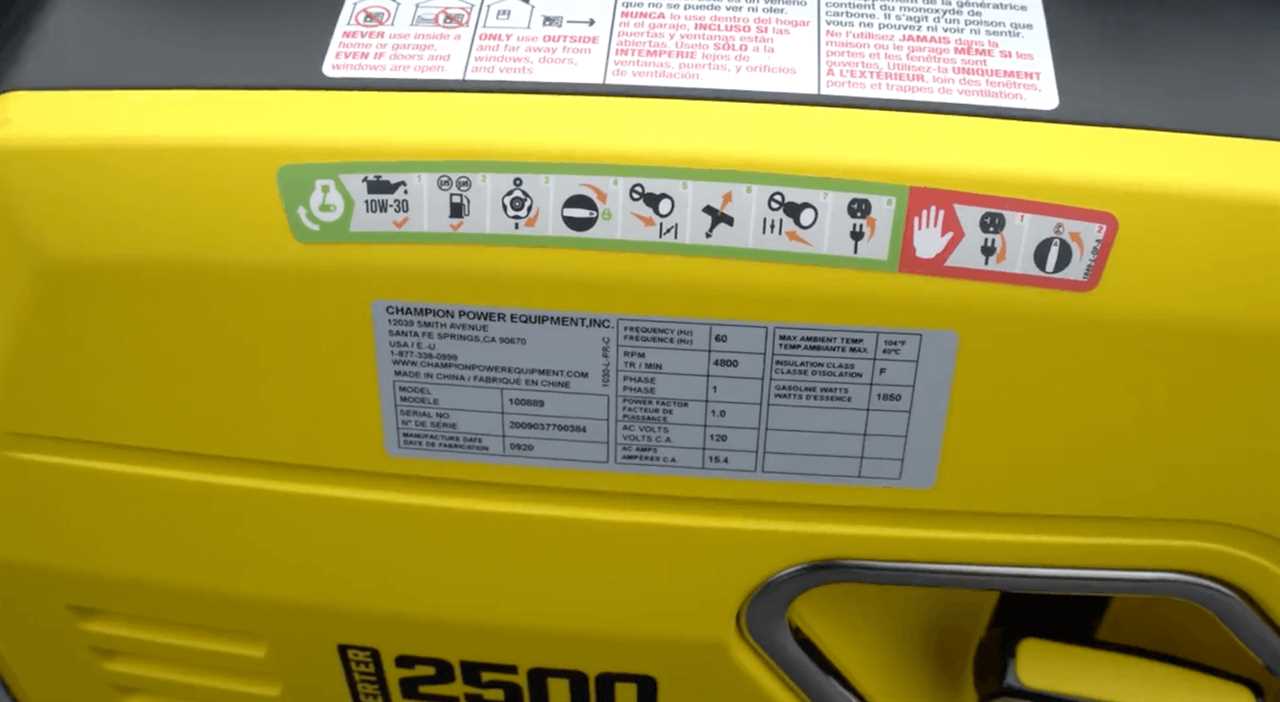
Photo by Camping World
Hooking up a portable generator the right way will help to ensure your safety and the safety of your fellow campers. But there are some other generator safety tips and tricks that you should be aware of before you ever hook up your generator and fire it up.
Read this article on portable generator safety tips before you move forward with hooking up your portable generator.
Additionally, check with campgrounds to make sure they allow the use of external portable generators and inquire about regulations for maximum generator decibel ratings. Many campgrounds restrict generator use to certain hours, and extremely loud generators may be prohibited entirely.
Although every campground is different, you can operate a generator with a 50-70 decibel output to stay compliant with most campgrounds. Still, call ahead and make sure your generator will be acceptable at the campgrounds you plan to visit.
How To Hook Up a Portable Generator
So now we’re getting to the good stuff. At this point, you’ve acquired a compatible generator for your RV, you’ve checked that it’s acceptable to use at your location, and you’re familiar with our general tips for practicing generator safety.
It’s time to set up your RV or travel trailer and hook up your generator using these steps:
Park and Position
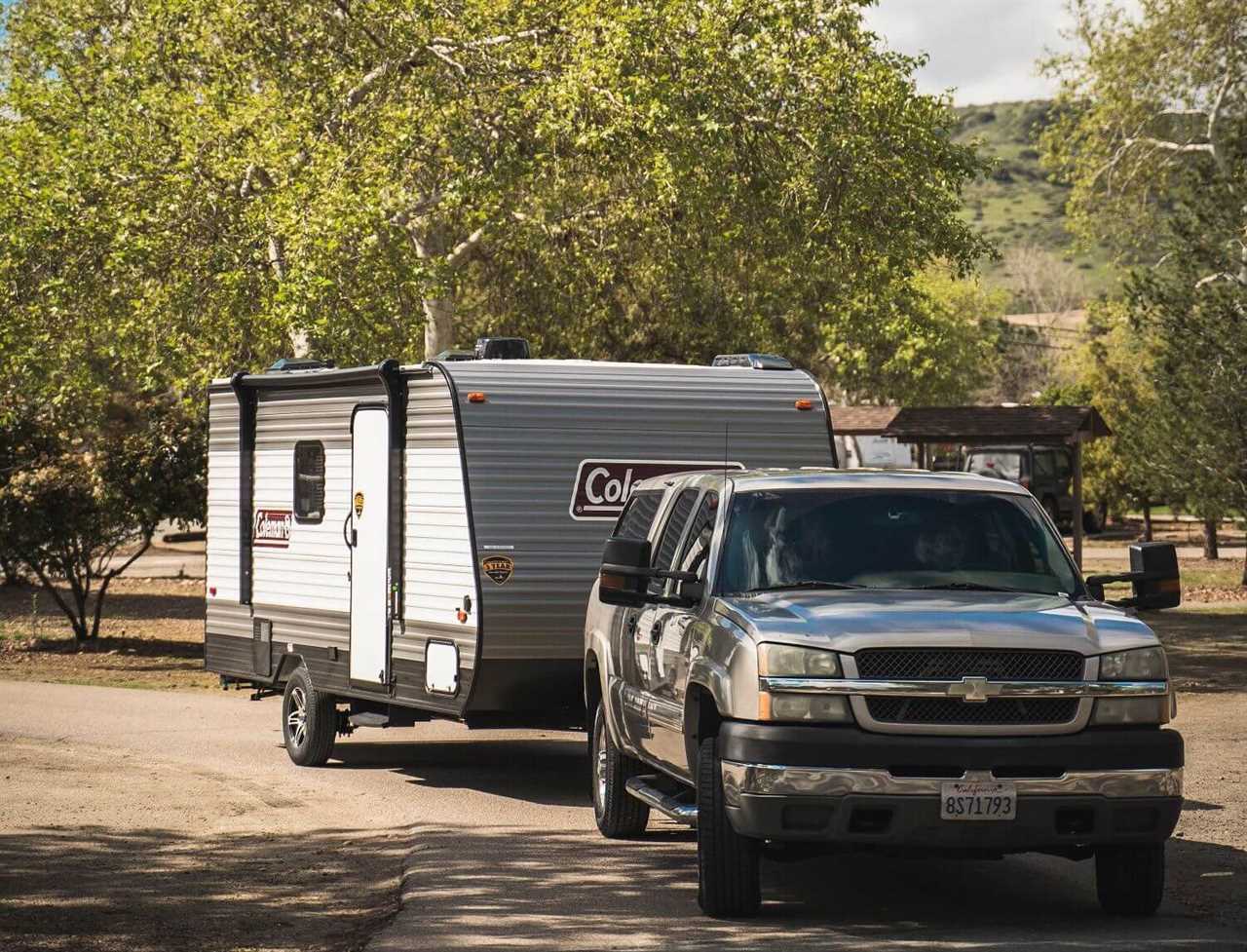
Photo by Camping World
Your first step is always to park, level, and stabilize your RV so that it’s secure. If this is new to you, you’ll probably want to learn how to level your RV right the first time around.
When you know you’re going to hook up a portable generator, you’ll want to consider how you position your RV and where your generator will sit relative to your camper’s position. Your generator should be placed on a level, flame-resistant surface.
A concrete RV pad is always preferred over grass, pine needles, or other combustible natural elements.
Give Your Generator Plenty of Clearance
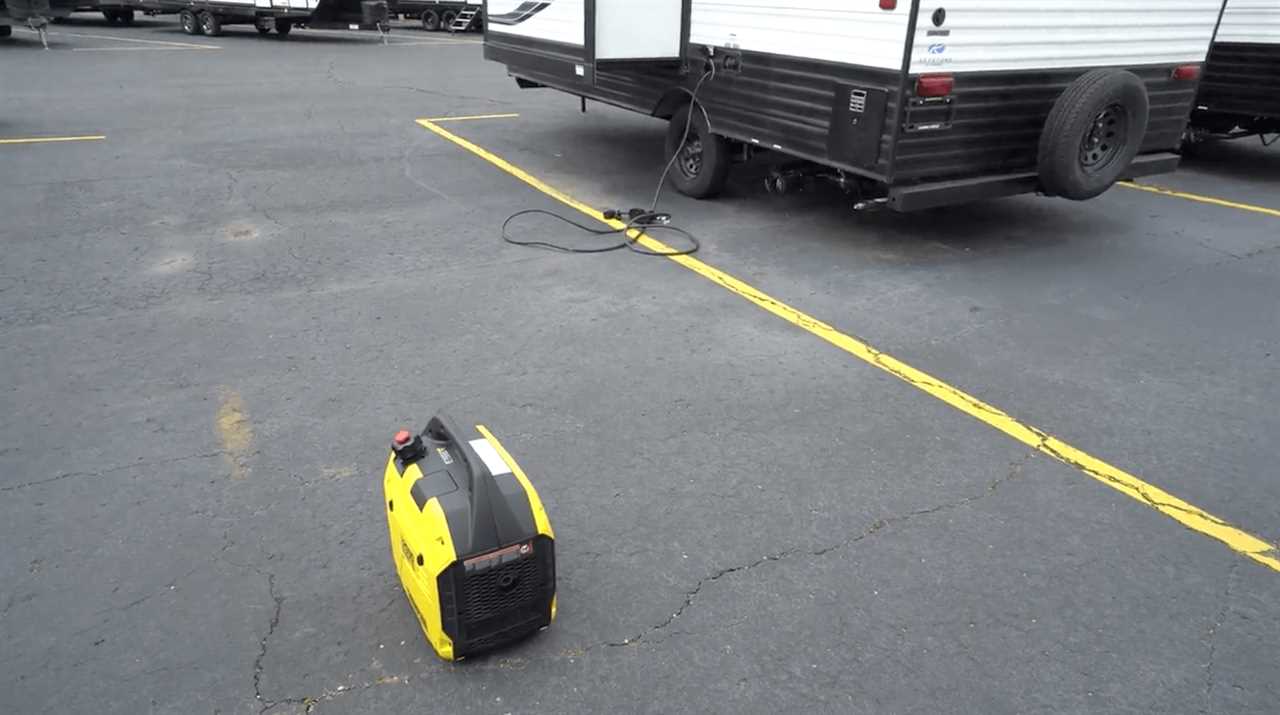
Photo by Camping World
The next thing to consider is the space around your generator. Most generators require a minimum of five feet of air space on all sides to ensure safe operation. Consult your owner’s manual for a model-specific recommendation.
We recommend placing your generator at least 15 feet away from your RV. If you want to be even more cautious, simply extend the complete length of your heavy-duty RV extension cord and position your generator at the end of that cord.
Make sure the exhaust is pointing away from your RV and anything else it could harm. This includes other campers in the near vicinity. There have been unfortunate incidents of generators pushing exhaust into neighbors’ coaches due to lack of clearance, resulting in carbon monoxide poisoning. So be mindful of your surroundings when hooking up your portable generator.
Pre-Checks
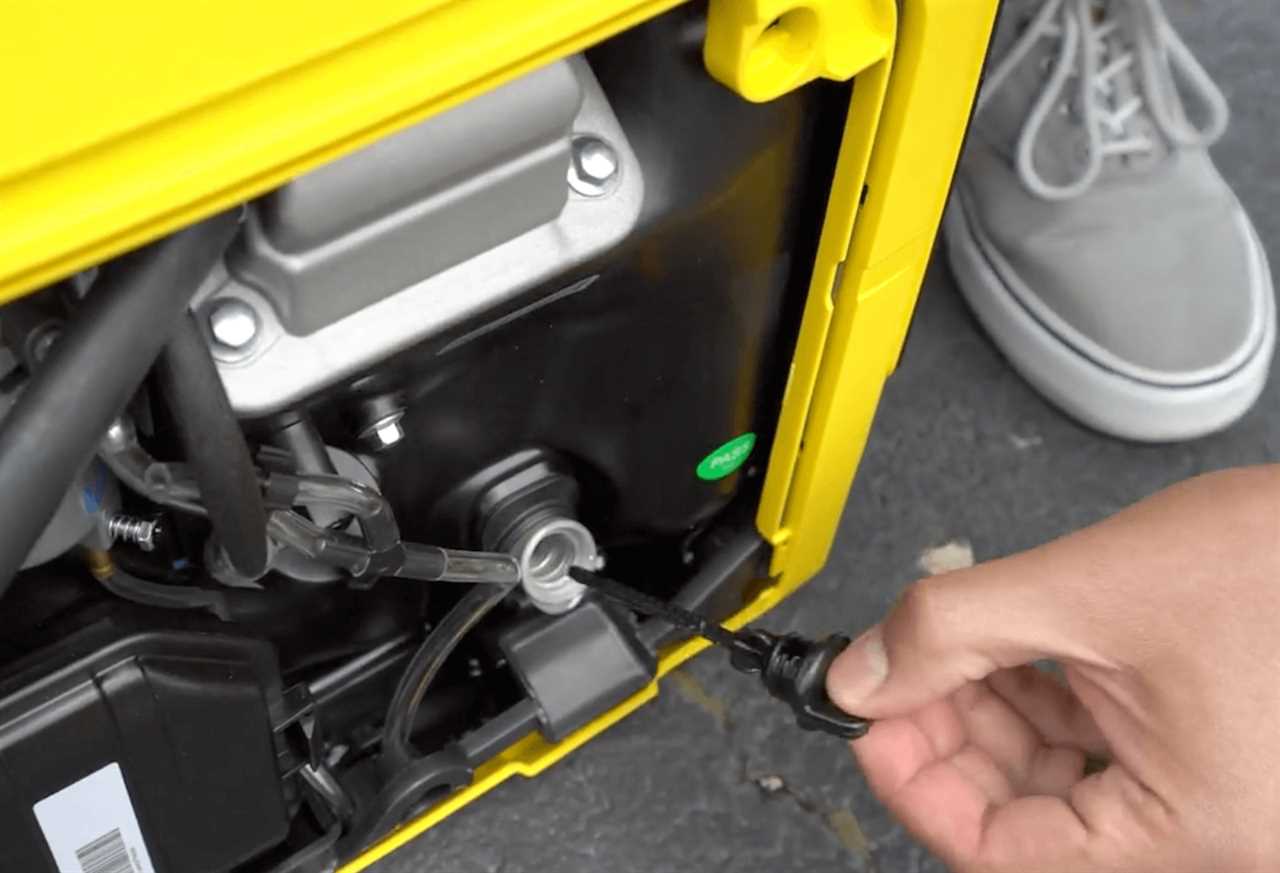
Photo by Camping World
You’re almost ready to fire up your portable generator, but there are a few more things you should check before doing so. Check the oil level and ensure the generator has plenty of fuel (gas or propane, depending on the model). If you’ve had your generator for a long period of time, check and clean your air filter too.
At this stage, your power cord should remain unplugged, and you should turn off all RV appliances. Make sure any backup supplies of fuel or oil are stored a safe distance (minimum 25 feet) from your generator before starting.
How To Start a Portable Generator
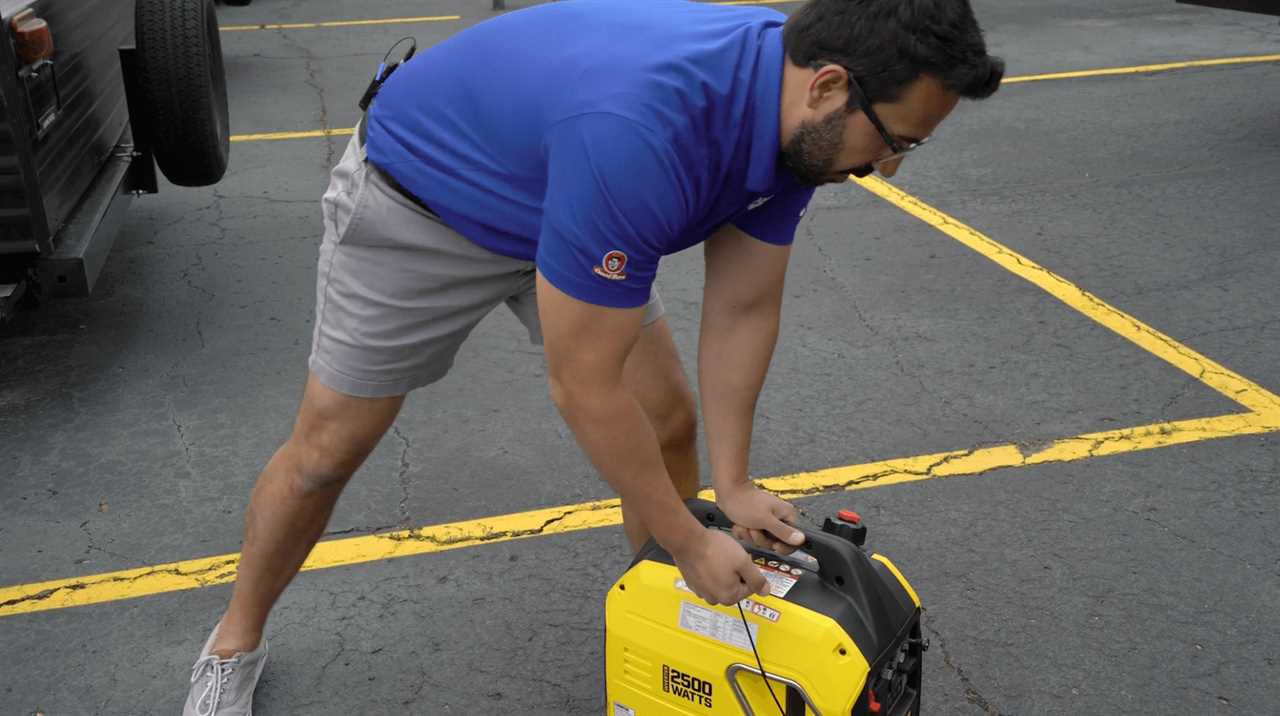
Photo by Camping World
To be honest, all portable generators are different. You might have one with a crank handle or an inverter generator with an electric start. Consult your owner’s manual for specific starting procedures relevant to your setup. That being said, here are the basic steps for starting my Champion generator:
- Check oil and fuel
- Turn on the fuel valve
- Flip switch to On position
- Flip choke to starting position
- Pull crank handle
- Adjust choke to running position
Let your generator run for a minimum of 5 minutes BEFORE you plug in your RV. Starting a generator with your RV already plugged in can damage your RV’s electrical system. Consider plugging a surge protector directly into your generator. Then plug your RV power cord into the surge protector.
Once plugged in, you may need to be mindful of energy consumption. You may not be able to run all of your appliances with higher wattage ratings (i.e., multiple A/C units and your microwave) at once.
How To Disconnect a Portable Generator
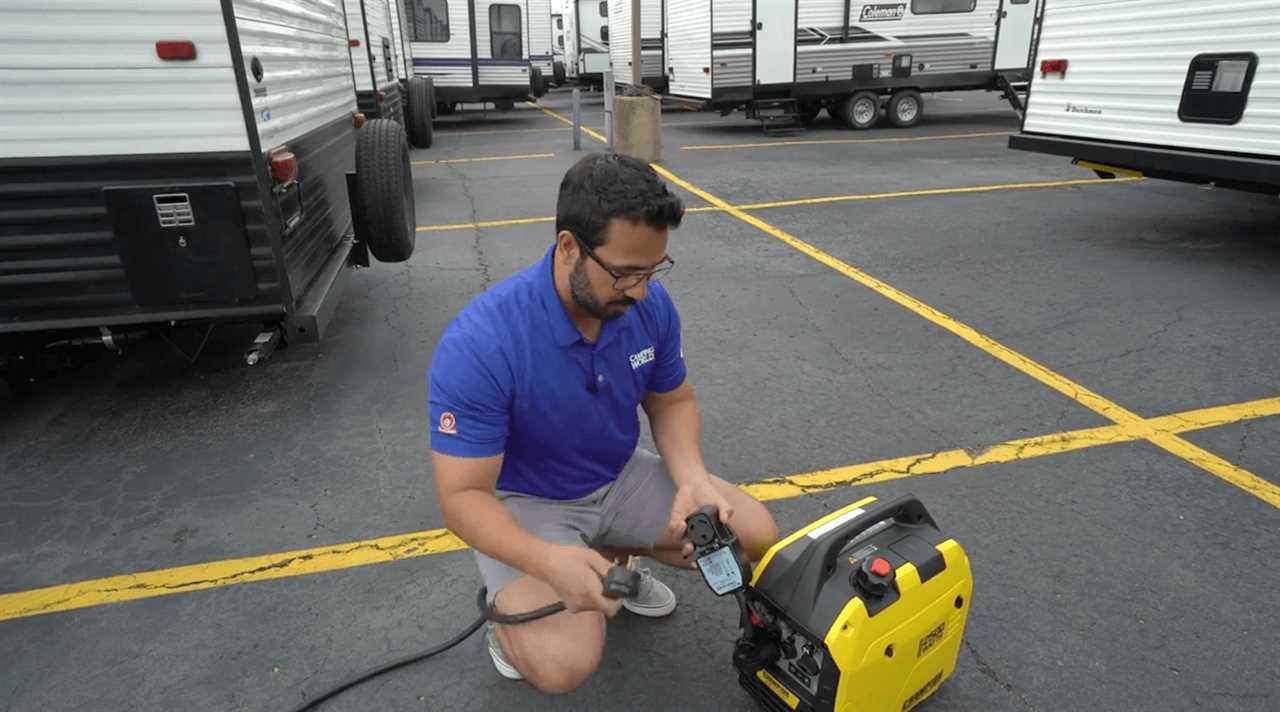
Photo by Camping World
When it’s time to disconnect your power cord and shut down your generator, begin by turning off all RV appliances. Step outside and disconnect the power cord first. Then follow the steps in your generator’s owner’s manual to power it down. Mine, for example, requires turning the power switch to the Off position and then turning off the fuel valve.
How To Refuel a Portable Generator
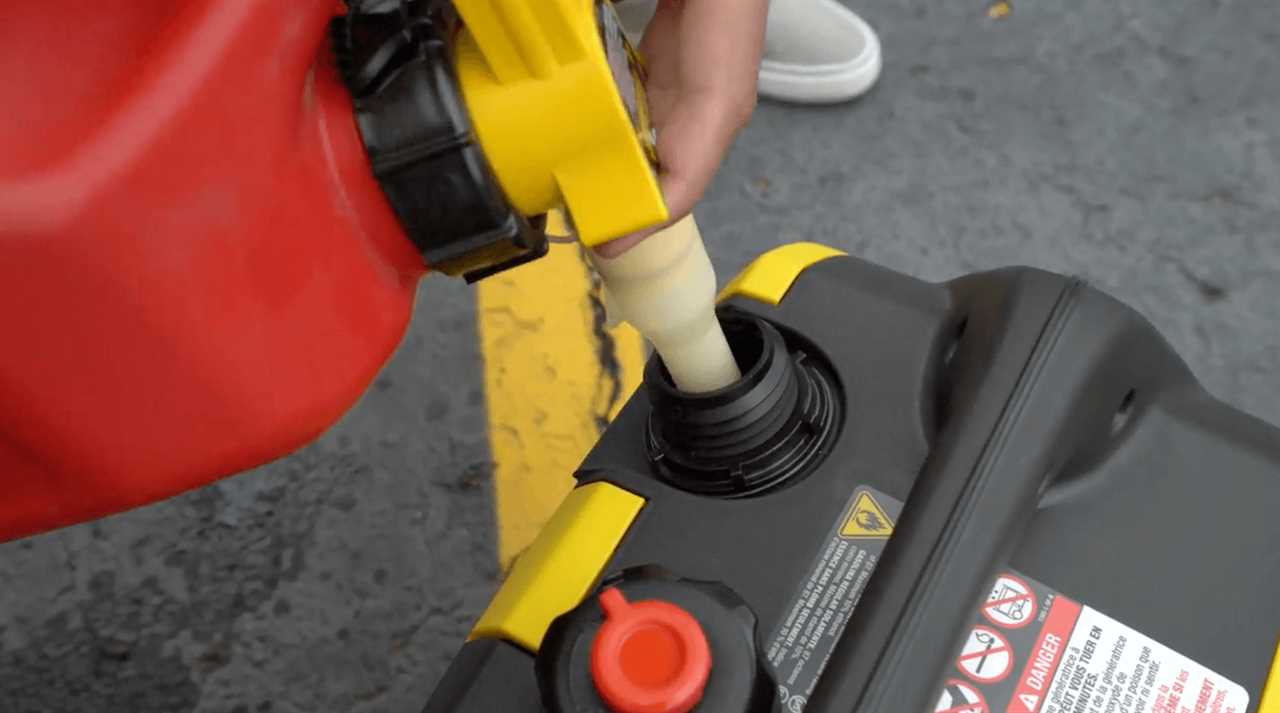
Photo by Camping World
These days, many newer generators come with automatic shut-offs to ensure generator safety when you run out of fuel. But they don’t refuel themselves. When refueling your portable generator, make sure the generator is turned off.
Let it cool down for 5-10 minutes before removing the fuel cap and refilling the fuel tank. Make sure you use the correct fuel for your generator, as incompatible fuels can cause the engine to seize and will render your generator useless.
If you have a dual-fuel portable generator that runs on either propane or gasoline, consult your owner’s manual for the proper procedures for switching between these two fuel types.
Now that you know how to hook up a portable generator safely, you can get back to exploring off-the-beaten-path campgrounds without worrying about full hookups. Portable generators can really expand your camping options, and they can also come in handy in the event of emergencies that leave you without power at home for an extended period!
What are some ways you ensure the safety of your RV and fellow campers when operating a portable generator? Share your thoughts in the comments below!
If you’re still learning the ins and outs of RV maintenance, check out our downloadable RV ownership and maintenance booklet!
By: Tucker Ballister
Title: How to Hook Up a Portable Generator
Sourced From: blog.campingworld.com/rv-basics/how-to-hook-up-a-portable-generator/
Published Date: Mon, 23 May 2022 14:00:15 +0000
---------------------------------------------
 CampingSurvivalistHuntingFishingExploringHikingPrivacy PolicyTerms And Conditions
CampingSurvivalistHuntingFishingExploringHikingPrivacy PolicyTerms And Conditions
